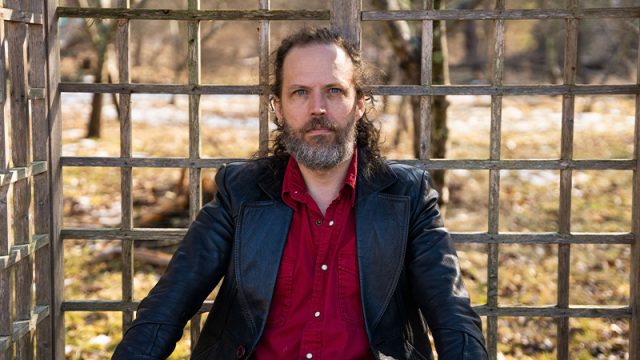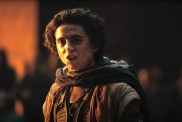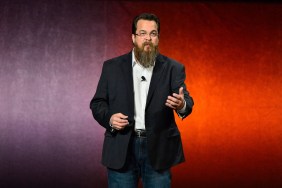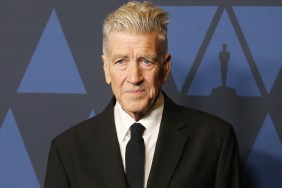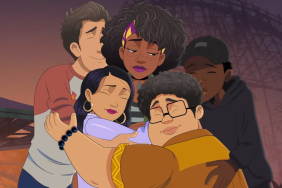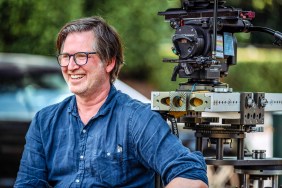Spotlight is ComingSoon’s interview series with below-the-line and/or up-and-coming talent in the world of television and film. Our aim is to shine a spotlight on the varied positions that make the entertainment you love possible rather than focusing purely on actors and directors.
ComingSoon’s Jeff Ames spoke with Harold Moss about his new production studio FlickerLab.
Moss, the founder of the 22-year-old animation, innovation, and production studio FlickerLab, has spent his career fusing storytelling, technology, and a passion for change-making media. Notably, Harold created and voiced the three-minute cartoon “A Brief History of the USA” in Michael Moore’s Academy Award-winning Bowling for Columbine (2003); was a producer of the 2008 Sundance Grand Jury Prize–winning and Oscar-nominated documentary, Trouble the Water; and is currently wrapping production on a sixth season of the Bleacher Report animated hit Gridiron Heights. His work spans commercials, documentaries, advocacy, political campaigns, animation, and entertainment. He has also produced a large volume of impactful learning content, including creating the series How the Body Works, currently in use in 30,000 classrooms across the country.
ComingSoon: What led you to become an animator and create your company, FlickerLab?
Harold Moss: I spent the 90s in New York coming up through the desktop digital animation revolution, with new tools like After Effects displacing room-sized motion control camera rigs, massive optical film printers, and million-dollar custom graphics boxes. I mean, QuickTime could play a whopping 320X240 resolution clip in real-time. Whoa! At the same time, I was very active in grassroots political activism across a range of issues. These two strands came together when a studio I was working with was asked by Saturday Night Live to animate the cartoonist Dan Perkin’s strip This Modern World by Tom Tomorrow. Sure, there were others around who could speak to animation, but I was the only one that knew animation and politics, so they put us together to make the piece. That short never aired, but out of it, Dan and I sold a web series to Mondo Media and went on to create 39 episodes of This Modern World by Tom Tomorrow. I founded the studio to carry out that production, and to be a laboratory for exploring storytelling across platforms and new technologies, with a particular focus on change-making media.
In the 20 years since, I’ve gotten to make a ton of amazing content with folks like Stephen Colbert and Michael Moore, for networks like Cartoon Network, Comedy Central, Bleacher Report, and PBS Kids, and create everything from documentaries and political ads, to digital series, and learning platforms aimed bridging achievement gaps for disadvantaged learners, games, apps, e-books, 360 VR content, virtual environments, live streaming events, and on and on. It’s great being able to look back and see the impact we’ve had, and all the work we’ve created. But mainly, I’m looking forward. 30 years of making media every day, and I think I’ve got the hang of it now! My focus over the next years is on building out our slate of original content on the digital series, and narrative feature film fronts. Lots of exciting things coming down the pipe!
What was it about the new Reading Rainbow Live intro that made you want to work on it?
What wasn’t there? The original show is seminal in the field of making of great learning media for kids. A real gold standard. I was too old to grow up watching the show, but was lucky enough to get to know one of the creators of the original, Twila Ligget, early in my learning media-making career, and to work beside one of the original educational designers on the show, Carla Seal-Wanner, for many years. These brilliant women, and the spirit and methods of Reading Rainbow, have informed my kids media work since.
So I was absolutely thrilled to help launch a new version of the show, and even more so when I got to know the incredibly creative team behind it. True to the Reading Rainbow spirit, they made working together a form of joyful play. The whole team is incredibly collaborative, open, and kind. So on top of my reverence for the original source material, I got the chance to hang out and make cool things with smart and creative people to help boost our country’s seriously floundering early reading skills. What a great way to spend any day of this life.
What was the most challenging aspect of creating the Reading Rainbow Live animated intro and how did you overcome that?
Our biggest challenge was adapting the energy and themes of the original, nearly one-minute animated opening, into a tightly timed open that would work for the new live, interactive event. To do that, we translated the longer set pieces in the original series’ open into more of a montage revealed by the turning pages of a book. It’s a different open to a different version of the show, but I think we captured the original’s spirit of celebrating reading and the infinite worlds you can unlock between the pages, or behind the swipe, of a book.
MORE: Spotlight Interview: Erich Bergen Discusses His 6W Entertainment Company
What were some of the things you learned from creating the Reading Rainbow Live animated intro that you’re excited to apply to future endeavors?
I’ve been creating animations of different types just about every day for decades, so at this point, there aren’t that many big revelations on the process for a project like this. I’d actually flip the concept, and say one of the keys is to approach new projects with what Buddhists call a beginner’s mind. When you do something for so long, it’s even more important to not allow all the assumptions and practices you’ve built up define a new project before you even start, but rather go in with a sort of learned naivete. Can I view the opening for a reading show with the eyes of a child who is its audience? What would be delightful? What would bring me joy? What feels true to this particular story? I try, through that open-hearted exploration, to find the true and authentic visual story that is waiting to be told. Only then do we unleash all the experience of creating so many pieces and types of animation towards manifesting that vision. Finding that state of beginner’s mind, and letting yourself live there during the creative process, is so critical to keeping your work fresh, and keeping your heart in the work. To me, it makes the beginning of every project exciting, as we start in a state of pure imagination and storytelling. To be children telling stories for the joy of it, that’s the spot to be.
You are also the Co-Founder of Climate Ad Project. Can you please describe why you created this organization and the organization’s biggest goals?
I founded the group with NASA climate scientist Peter Kalmus, and a group of incredible media makers and storytellers. The why is simple. If you aren’t fully terrified of what we’re doing to our global climate, just spend some time with a climate scientist. That’ll fix ya. In short, we are putting our entire human civilization at great and increasing risk. As the UN Secretary-General recently put it, we are “sleepwalking to climate catastrophe.” It’s the single greatest threat facing humanity. We have a very short window to save ourselves, but we continue to move in the direction of more emissions, more oil, more gas, when we need to shut those industries fully down.
And, of course, the fossil fuel industry spends countless billions sowing misinformation and confusion (and buying matching sets of politicians) to try to stop those efforts. That’s what the Climate Ad Project, a scrappy band of volunteers, has set ourselves up to counter. Easy, right?
We’re using the talents and energies of people in the creative industries worldwide to create short videos to challenge that misinformation and wake people up to the civilization-collapsing scale crisis that is climate change. It might sound impossible. All things do before they happen. But there isn’t any choice. We need to start shutting down the global fossil fuel economy altogether in the coming few years. If we don’t, we could well lose it all. And when I say all, I mean cities and towns, global food infrastructure, unknowable numbers of species, drinkable water. Really, everything. That’s what drives us.
The most frustrating aspect of this is we already have most of the technology and solutions we need to solve the climate crisis, but we lack the political will to take on the fossil fuel industry and its profits. We’re in a situation where the profits of one industry (and all those whose loyalty they buy), are being placed ahead of human civilization itself. Kind of crazy, right? We need a movement of billions to force the change. So we’d welcome with open arms anyone in the production and creative world—writers, editors, producers, animators, composers, actors, directors—as well as scientists and other climate area experts to join us at www.climateadproject.org. It’s a monumental task, but extremely fulfilling, and the most important work any of us can be doing. Join us!
